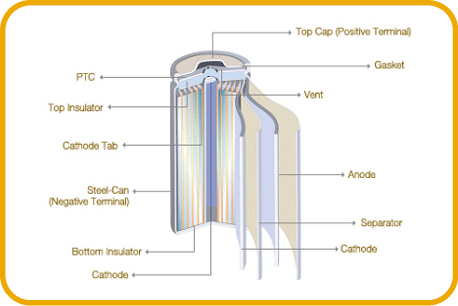Battery Repacking
What is a “battery pack”?
Battery packs are made up of a number of cell components, configured together to suit each application. With the latest battery technologies being introduced to the market (Nickel Metal Hydride & Lithium Ion), battery packs are becoming more complex with the addition of thermal sensors and charging circuitry to ensure safety and maximum performance.
What is battery repacking?
– Involves the re-use of original housings and internal charging and safety devices.
– The old cell components are removed and disposed of though a collection agency for recycling
– New, high quality cells are assembled to the original configuration, including any reclaimed charging & protection circuitry
– Battery packs are tested and resealed within the original housing before returning to customer
Why repack your battery??
Save money
Many original equipment manufacturers rely on the high resale cost of spare parts to boost profits. You will experience a significant saving having your battery repacked.
Increase Capacity
Our range of cells included the highest quality latest technology available. Increased capacity for rechargeable batteries is quite normal in such demanding times for portable power. Your battery pack will be upgraded to the highest capacity available on today’s market.
Battery Pack Maintenance
A common difficulty with battery powered equipment is the progressive deterioration of reliability after the first year of service. This phenomenon is mostly due to premature ageing of the battery, a reversible capacity loss that is induced by “memory”. This loss occurs gradually without the user knowing. Although fully charged, the battery eventually regresses to a point where it can hold less than half of its original capacity, resulting in unexpected down time. Downtime almost always occurs at critical moments.
Under normal conditions, the battery holds enough power until recharged. During heavy activities and longer than expected duties, a marginal battery cannot provide the extra power needed and the equipment fails. In many ways a rechargeable battery exhibits human-like characteristics, it needs good nutrition. It prefers moderate room temperature and in case of the Nicad battery, requires regular exercise to prevent the phenomenon called “memory”.
Memory: Myth or Fact?
There is some misconception about the word “memory” Memory is commonly blamed for all battery failures known to man. Originally, the word memory was derived from cyclic memory, meaning that a Nicad battery can remember how much discharge was required on previous discharge. Improvements in battery technology have virtually eliminated this phenomenon.
Tests performed at the Black & Decker lab, for example, showed that the effects of” cyclic memory” were so minute that they could only be detected with sensitive instruments. After the same battery was discharged for different lengths of time, the cyclic memory phenomenon could no longer be detected. The problem with the modern Nicad battery is not the cyclic memory but the effects of crystalline formation.
The active materials of a Nicad battery (nickel & cadmium) are present in crystalline form. When the memory phenomenon occurs, these crystals grow, forming spike or tree-like crystals that cause the Nicad to gradually lose performance. In advanced stages to lose crystals may puncture the separator, causing high self-discharge or an electrical short.
Regular Exercise
Crystalline formation is most prominent if the battery is left in the charger for days, or if repeatedly recharged without a periodic full discharge. It is not necessary to discharge a Nicad before each charge. A full discharge to one volt per cell once a month is sufficient to keep the crystal formation under control.
Such a discharge/charge cycle is referred to as exercise. If no exercise is applied for several months, the crystals ingrain themselves, making them more difficult to dissolve. In such a case, exercise is no longer effective in restoring a battery and refurbishment is required.
Self Discharge
If left on the shelf, a new Nicad loses about 10% of its capacity within 14 days. A problem arises if the battery self-discharged by itself within a day, a phenomenon that is not uncommon, especially for an older battery. The cause of high self-discharge is a damaged separator, a thin, delicate insulator that isolates the positive & negative cell plates. Once damaged, the separator can no longer be repaired.
External forces that harm the sensitive separator are:
Uncontrolled crystalline formation due to lack of exercise
Poorly designed charges that “boil” the battery
Plain old age
Battery pack applications
– PDA’s
– Mobile Phones
– Cordless Phones
– Digital Cameras
– Video Camera
– Power Tools
– Dust busters
– Portable Searchlights

Contact us on 8725 9911 for pricing and availability
VISIT US IN STORE
120 Penola Road
Mount Gambier
South Australia 5290
INFORMATION
CONTACT US
Phone: 08 8725 9911
Fax: 08 8723 0227
Email: admin@sebatteries.com.au
